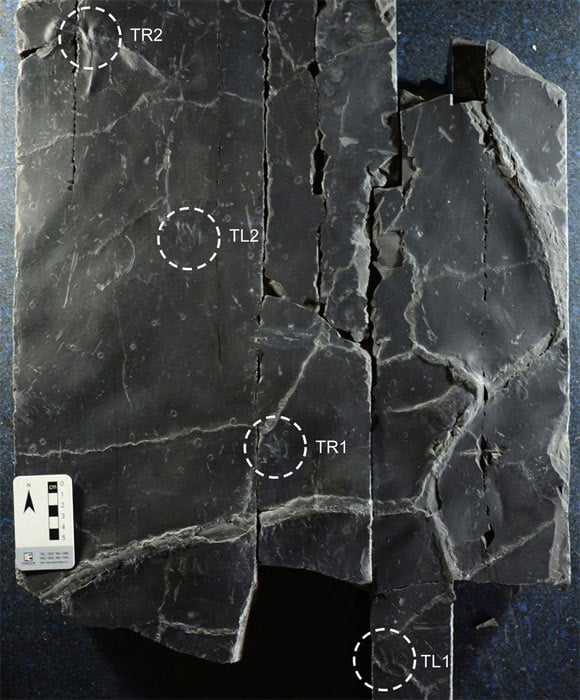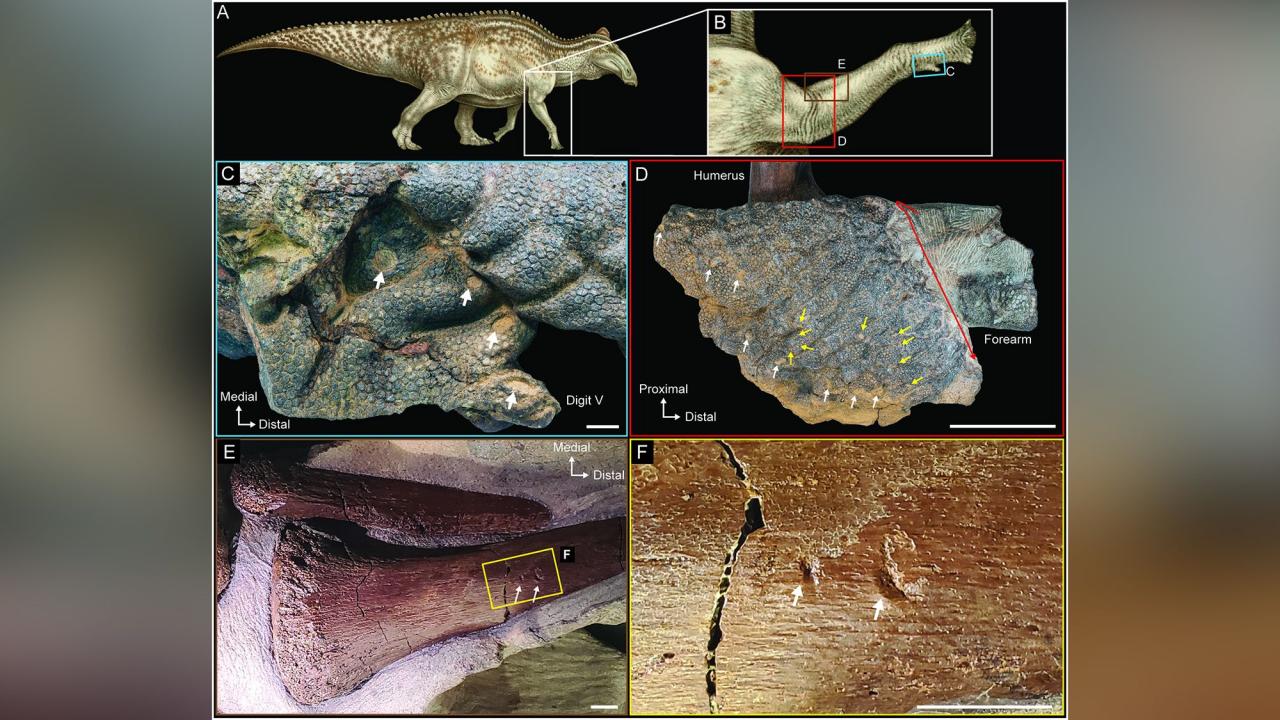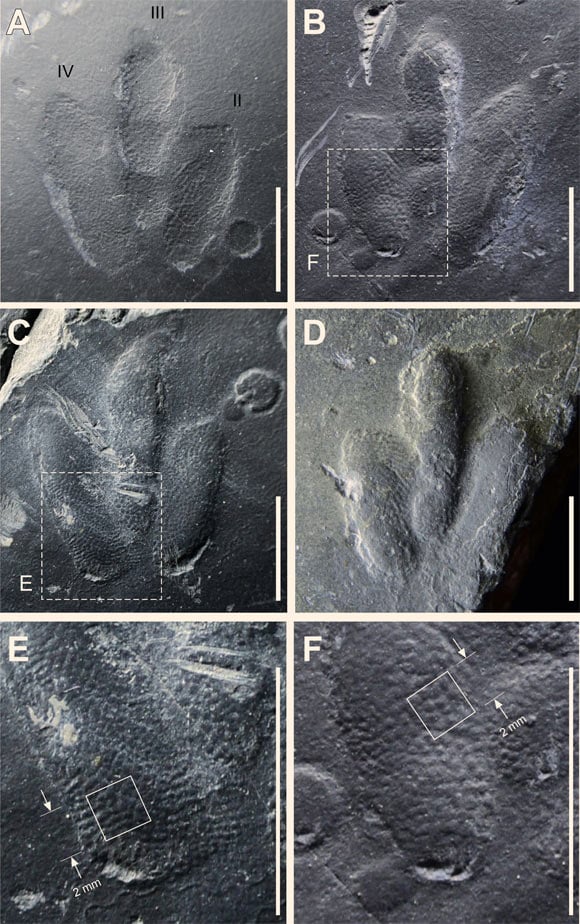Several footprints and exquisitely-preserved skin impressions made by a small theropod dinosaur approximately 120 million years ago (Aptian age of the Early Cretaceous epoch) have been found in the Jinju City area in Korea.

Four-track Minisauripus trackway. Image credit: Kim et al, doi: 10.1038/s41598-019-38633-4.
The Jinju footprints, assigned to the ichnogenus Minisauripus, are only an inch long (2.5 cm), and paleontologists were able to find perfectly preserved skin traces on them.
“These are the first tracks ever found where perfect skin impressions cover the entire surface of every track,” said University of Colorado Denver’s Professor Martin Lockley.

“They were made on a very thin layer of fine mud, rather like a coat of fresh paint only a millimeter thick.”
“When the tiny dinosaur stepped on this firm, sticky surface, the skin texture of the foot was reproduced perfectly, without slipping or sliding.”

Minisauripus: natural impression (A) and cast (B) of track TL 2 showing area enlarged in frame F; note skin traces in hypex area between digits II and III; (C) natural cast of track TR1, showing area enlarged in frame E; note narrow, digit II intersecting raindrop impressions; (D) isolated track t; note skin traces in hypex area between digits II and III; E and F details of skin trace ornament in 2.0 x 2.0 mm areas of digits IV and II respectively from tracks TL2 and TR1; casts show in frames B-F are essentially replicas of the living foot. Image credit: Kim et al, doi: 10.1038/s41598-019-38633-4.
Evidence shows that, just before the tracks were made, there had been a rain shower leaving water-drop impressions.
In one place, the dinosaur had stepped on a fresh rain drop mark, proving rain came first, and the dinosaur step came second.

All this delicate evidence was preserved by being gently covered with more fine mud.
“The skin pattern as similar to examples from much larger, carnivorous theropod dinosaur tracks, in which scales are much larger but never preserved across the whole footprint,” Professor Lockley and colleagues said.
“The more distantly-related giant brontosaurs had scales that left traces 0.8-1.2 inches (2-3 cm) in diameter.”
“So the delicate, perfectly-preserved Minisauripus skin texture is like a shrunken version of the skin of a much larger relative, with no shrinkage of the skin traces.”
Source: sci.news








